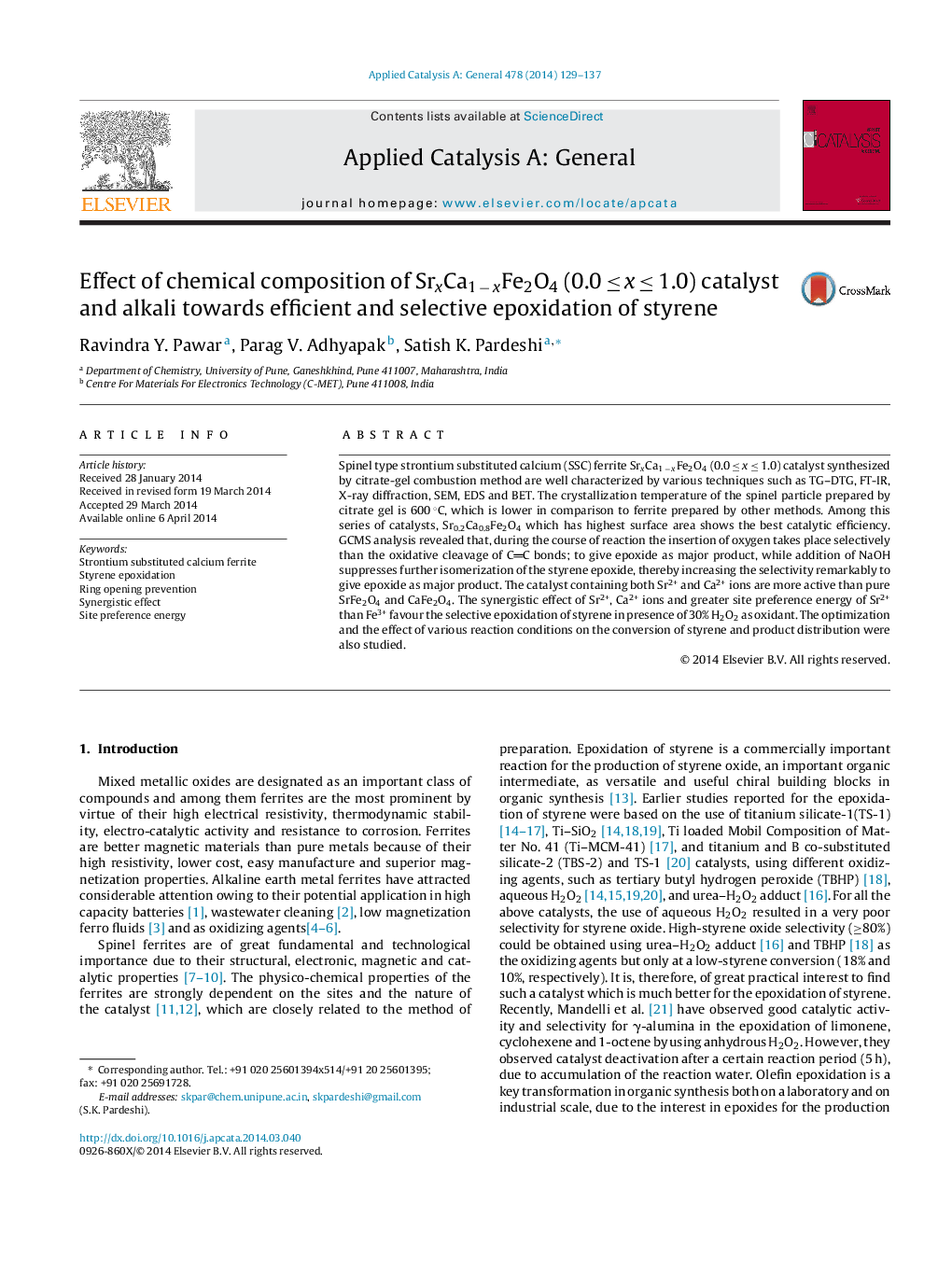| Article ID | Journal | Published Year | Pages | File Type |
|---|---|---|---|---|
| 39681 | Applied Catalysis A: General | 2014 | 9 Pages |
•Sr0.2Ca0.8Fe2O4 with highest surface area is found to be the best catalyst.•Synergistic effect of Sr2+ and Ca2+ ions enhance the epoxidation of styrene.•The site preference energy of Sr2+ ion is greater than Fe3+ ion.•Important role of NaOH towards the enhancement of epoxide selectivity.
Spinel type strontium substituted calcium (SSC) ferrite SrxCa1 − xFe2O4 (0.0 ≤ x ≤ 1.0) catalyst synthesized by citrate-gel combustion method are well characterized by various techniques such as TG–DTG, FT-IR, X-ray diffraction, SEM, EDS and BET. The crystallization temperature of the spinel particle prepared by citrate gel is 600 °C, which is lower in comparison to ferrite prepared by other methods. Among this series of catalysts, Sr0.2Ca0.8Fe2O4 which has highest surface area shows the best catalytic efficiency. GCMS analysis revealed that, during the course of reaction the insertion of oxygen takes place selectively than the oxidative cleavage of CC bonds; to give epoxide as major product, while addition of NaOH suppresses further isomerization of the styrene epoxide, thereby increasing the selectivity remarkably to give epoxide as major product. The catalyst containing both Sr2+ and Ca2+ ions are more active than pure SrFe2O4 and CaFe2O4. The synergistic effect of Sr2+, Ca2+ ions and greater site preference energy of Sr2+ than Fe3+ favour the selective epoxidation of styrene in presence of 30% H2O2 as oxidant. The optimization and the effect of various reaction conditions on the conversion of styrene and product distribution were also studied.
Graphical abstractFigure optionsDownload full-size imageDownload high-quality image (83 K)Download as PowerPoint slide
